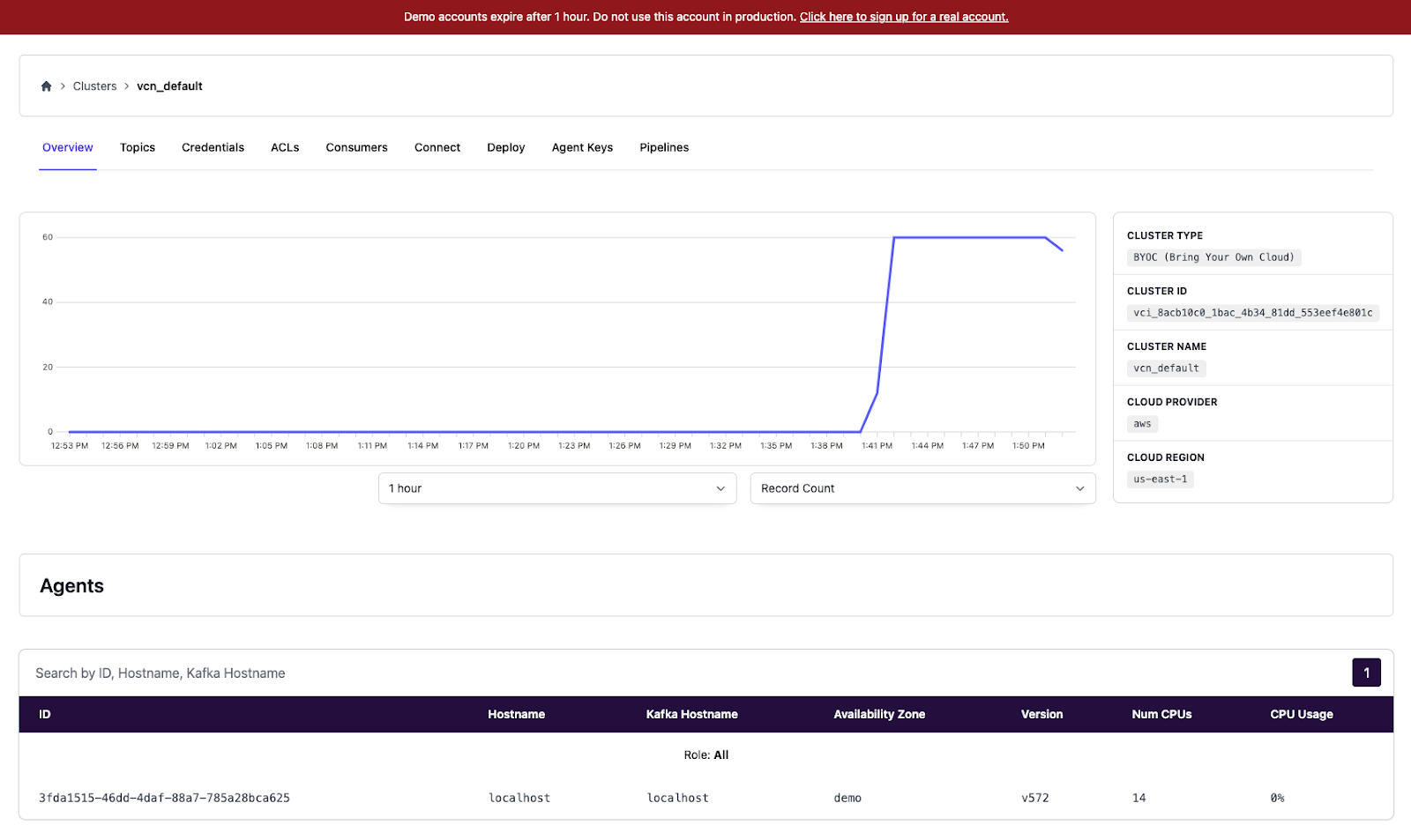From Kafka to WarpStream: Simplifying Data Streaming with MinIO

While Apache Kafka has long been the industry standard for streaming data, new and innovative alternatives are reshaping the ecosystem. One of these is WarpStream, which recently entered a new chapter under Confluent's ownership. This acquisition has further strengthened WarpStream’s ability to deliver high-performance, cloud-native data streaming, solidifying its position as a scalable and cost-effective alternative to Kafka. This tutorial will walk you through getting started with WarpStream and MinIO and explain how combining these tools can offer simplicity, flexibility and cost savings to your streaming architecture.
A Modern Alternative to Kafka
Kafka's foundational role in real-time data processing is undeniable, but over time, the complexities of managing brokers, local file storage, and ZooKeeper operations have become pain points for many. WarpStream addresses these challenges by providing a Kafka protocol-compatible platform that runs on object storage. Unlike Kafka, which requires extensive operational overhead, WarpStream is much simpler to manage and can reduce cloud deployment costs by up to ten times.
With WarpStream, there’s no need for stateful brokers with local disks. Instead, WarpStream uses Agents, stateless Go binaries that are easy to scale and manage. These Agents can be configured to only discover others within the same availability zone, further reducing network-related costs—a key factor for cloud-based deployments. WarpStream's reliance on S3-compatible storage like MinIO enhances both performance and scalability without the added complexity of JVM, making it an ideal cloud-native alternative to Kafka.
Why MinIO and WarpStream are a Perfect Match
Like many businesses today, Confluent was very interested in WarpStream’s deployment model, which they call Bring Your Own Cloud (BYOC). By this they mean that WarpStream can deploy data streaming solutions across various environments, on-prem, in public or private clouds, co-los, or at the edge. Through their acquisition of WarpStream, Confluent expands Confluent's already impressive data streaming capabilities by integrating WarpStream's cloud-native, Kafka-compatible workloads with reduced operational complexity. As highlighted by Jay Kreps, CEO of Confluent, WarpStream's BYOC (Bring Your Own Cloud) model offers unprecedented flexibility, This versatility is particularly advantageous for large-scale workloads such as logging, observability, and feeding data lakes.
Since MinIO can also be deployed anywhere your data is, combining WarpStream’s BYOC architecture with MinIO’s high-performance, scalable object storage creates a powerful and truly flexible solution for modern data infrastructures that can be deployed almost anywhere. This combination provides the flexibility and efficiency for required businesses dealing with vast datasets and complex data pipelines that are quired for AI/ML initiatives.
Latency and Cost Considerations
WarpStream’s cost-effectiveness, ease of use, and flexibility are some of its primary selling points. However, it’s important to note that this simplicity comes at the cost of increased latency. WarpStream’s P99 end-to-end latency is approximately one second, compared to Kafka clusters that can reach low double-digit millisecond latencies. Thankfully, there are ways to reduce this latency, such as lowering the batchTimeout setting.
Setting Up MinIO and WarpStream
To get started with a development environment with MinIO, use the following command to create a single-node MinIO server:
mkdir -p ${HOME}/minio/data
docker run \
-p 9000:9000 \
-p 9090:9090 \
--user $(id -u):$(id -g) \
--name minio1 \
-e "MINIO_ROOT_USER=ROOTUSER" \
-e "MINIO_ROOT_PASSWORD=CHANGEME123" \
-v ${HOME}/minio/data:/data \
quay.io/minio/minio server /data --console-address ":9090"Once MinIO is up and running, create a dedicated Access Key for WarpStream, which avoids using your root credentials. Follow these instructions to create an Access Key:
You will next need to create a bucket. Follow these instructions to continue:
Next, set up WarpStream by running the following demo command:
AWS_ACCESS_KEY_ID="your-access-key" \
AWS_SECRET_ACCESS_KEY="your-secret-key" \
warpstream demo -bucketURL "s3://<your-bucket>?region=us-east-1&s3ForcePathStyle=true&endpoint=http://127.0.0.1:9000"After you run the Agent, launch the WarpStream developer console. The terminal where you ran the command will display the link.

The WarpStream Console allows you to view cluster type, time-based metrics for record count, uncompressed bytes and batch count, and stats tied to Agents like CPU usage.

The warpstream demo command creates a demo account with a 1-hour playground and an in-memory producer that generates small JSON documents at regular intervals. As you go through the demo, you can monitor your MinIO bucket to see the files WarpStream creates.

Deploying to Production
When you're ready to move to production, WarpStream provides Helm charts for Kubernetes deployments, simplifying scaling efforts. Crucially, AIStor brings powerful tools to optimize production environments. For example, the Global Console serves as a "single pane of glass" for managing your entire storage infrastructure, including multiple MinIO deployments across different environments—whether on-prem, in public clouds, or at the edge. Console allows for seamless monitoring and management of large-scale deployments, making it ideal for large scale use cases.
If your production workloads require further optimization, MinIO Cache is built for ultra-high performance, leveraging DRAM to create a distributed cache that enhances throughput—perfect for demanding workloads like AI/ML that require low-latency data access. Combined, these tools provide the operational efficiency and scalability you need to optimize storage infrastructure for large-scale production environments
Streamlining Data Streaming in the Cloud-Native Era
The combination of WarpStream and MinIO delivers a modern, cloud-native solution to data streaming. With WarpStream’s acquisition by Confluent, the future of data streaming on top of object storage is even more promising. Organizations looking to simplify their streaming architecture, cut costs, and avoid Kafka’s complexities should consider WarpStream as a compelling alternative. Paired with MinIO, it offers the performance, scalability, and flexibility that modern data-driven organizations need.
If you have any questions or need assistance, reach out to us at hello@min.io or on Slack—we’re here to help you navigate your data streaming journey.






